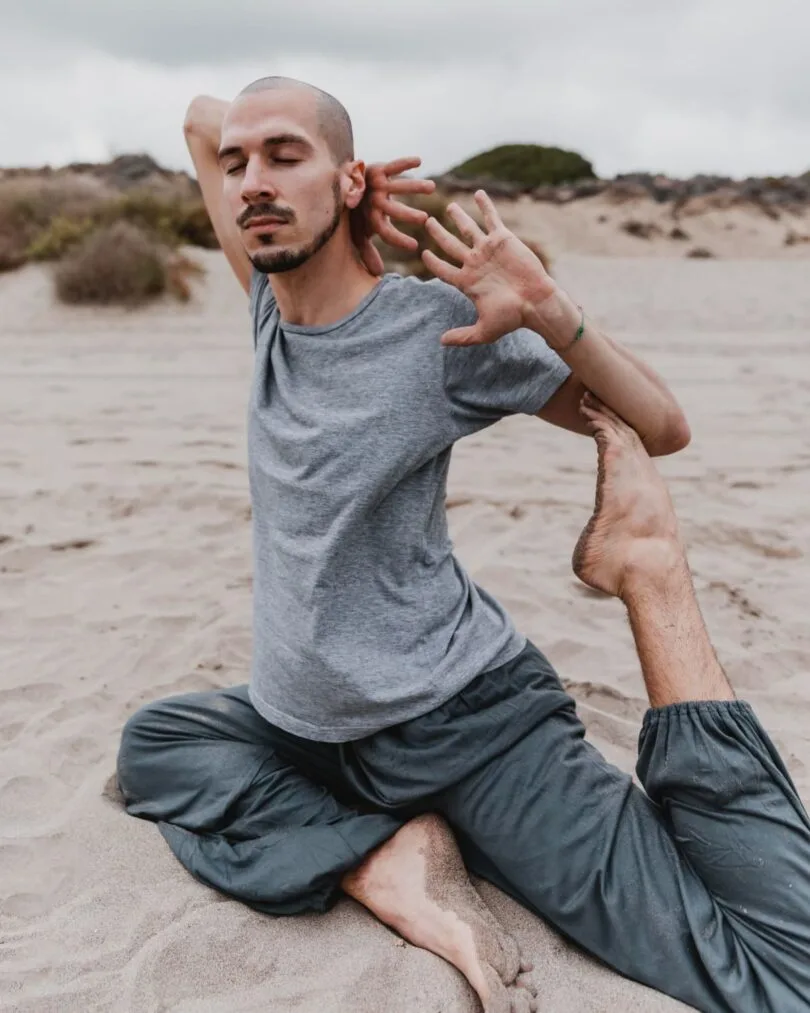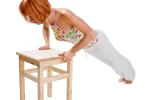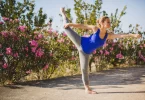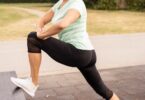Introduction
As men age, maintaining flexibility, strength, and overall health becomes increasingly important. Yoga is an excellent way to achieve these goals, especially for men over 50. This article covers some of the best yoga poses for older men, focusing on exercises that improve flexibility, balance, and physical strength. Whether you’re a beginner or someone looking to incorporate yoga into your routine, these poses are perfect for getting started and staying active as you age.
Table of Contents
Yoga for Men Over 50: An Introduction
Yoga for older men isn’t just about touching your toes or bending into pretzel-like shapes; it’s about building a stronger body, a calmer mind, and a healthier lifestyle. By incorporating yoga into your routine, you can improve your physical and mental well-being, prevent injuries, and even manage chronic conditions that tend to surface later in life. In this guide, you’ll find accessible yoga poses designed specifically for men in their 50s and beyond, with modifications that suit different fitness levels. Let’s dive into the first part of our journey towards better health.
Benefits of Yoga for Men Over 50
Physical Benefits
As we age, our bodies naturally lose flexibility and strength, making it essential to engage in activities that keep us active and mobile. Yoga for men in their 50s offers a variety of physical benefits that can help maintain and improve overall health.
- Improved Flexibility and Mobility
Yoga is known for its ability to improve flexibility and joint mobility. Regular practice of yoga poses helps to stretch tight muscles and increase the range of motion in the joints, which is particularly important for men over 50. Improved flexibility can lead to better posture, reduced risk of injury, and an overall sense of ease in daily movements
For those looking to go deeper into how yoga supports flexibility, the article “Best Yoga Poses for Flexibility” provides additional insights.
- Enhanced Strength and Balance
Many yoga poses for older men focus on building strength, especially in the core, legs, and arms. Strong muscles support the joints, reducing the risk of injury and enhancing overall balance. Balance, in particular, tends to decline with age, making it a crucial aspect of any fitness routine. Yoga poses like Tree Pose or Warrior II are excellent for improving balance and stability. - Reduced Risk of Injury and Chronic Pain
Yoga helps to strengthen the muscles and improve flexibility, which can significantly reduce the risk of injuries such as strains and sprains. Additionally, yoga is known to alleviate chronic pain, especially in the lower back, hips, and knees. By incorporating yoga into your routine, you can manage pain more effectively and potentially reduce your reliance on pain medications.
Mental and Emotional Benefits
Yoga is not just a physical practice; it also offers numerous mental and emotional benefits, which are especially important for men over 50.
- Stress Reduction
Yoga promotes relaxation and stress relief through controlled breathing and mindfulness techniques. These practices help calm the mind and reduce stress, which can have a positive impact on overall mental health. Men over 50 who practice yoga often report feeling more relaxed and better able to manage the challenges of daily life. - Improved Focus and Mental Clarity
Regular yoga practice can sharpen mental focus and clarity, making it easier to stay on top of daily tasks and responsibilities. The mindfulness aspect of yoga encourages you to stay present, which can help improve concentration and cognitive function over time. - Better Sleep Quality
Sleep problems are common as we age, but yoga can help. The relaxation techniques used in yoga can promote better sleep quality, helping you fall asleep faster and stay asleep longer. A good night’s sleep is essential for maintaining overall health and well-being, especially as we get older.
For those struggling with sleep issues, the practice of Restorative Yoga might be beneficial. Check out “Restorative Yoga for Seniors: Nurturing Relaxation and Renewal” for more information.
Health Benefits
In addition to the physical and mental benefits, yoga offers specific health benefits that are particularly relevant for men over 50.
- Lowered Blood Pressure
High blood pressure is a common issue for older adults, but regular yoga practice has been shown to help lower blood pressure levels. By reducing stress and promoting relaxation, yoga can contribute to better cardiovascular health. - Improved Cardiovascular Health
Yoga is known to improve heart health by lowering blood pressure, reducing cholesterol levels, and improving circulation. These benefits are especially important for men over 50, as they are at a higher risk of developing heart-related conditions. - Enhanced Respiratory Function
Yoga involves deep, controlled breathing, which can improve lung capacity and respiratory function. This is particularly beneficial for men over 50 who may experience a decline in lung function as they age. Better respiratory function can lead to improved endurance and overall energy levels.
Incorporating yoga for men over 50 into your daily routine can provide numerous physical, mental, and health benefits, making it an essential practice for maintaining well-being as you age. In the next part, we’ll discuss the preparations you should consider before starting your yoga journey.
Preparations Before Starting Yoga
Before jumping into a yoga routine, especially for men over 50, it’s crucial to prepare properly. These preparations will help you get the most out of your practice while minimizing the risk of injury.
Consulting with a Healthcare Provider
If you’re over 50 and thinking about starting yoga, the first step is to talk to your healthcare provider. This is especially important if you have any pre-existing conditions such as high blood pressure, joint problems, or heart issues. Your doctor can advise you on what’s safe and what to avoid, making your yoga journey both beneficial and safe.
Choosing the Right Yoga Class
When starting out, it’s essential to find a yoga class that suits your needs and fitness level. Not all yoga classes are created equal, and some might be too intense for beginners. Look for classes specifically designed for older adults or beginners. These classes will typically move at a slower pace, with an emphasis on proper alignment and modifications to suit different abilities. Online resources can also be a good option if you prefer practicing at home. Many platforms offer videos tailored to men over 50, focusing on improving flexibility, strength, and balance.
Essential Yoga Gear
Having the right gear can make your yoga practice more comfortable and enjoyable. Here’s what you’ll need:
- Comfortable Clothing: Wear clothing that allows you to move freely. Loose-fitting or stretchy garments are ideal, as they won’t restrict your movements. You don’t need fancy yoga attire—just something that feels good and lets you stretch without resistance.
- Yoga Mat: A good yoga mat provides cushioning and grip, which is important for stability during poses. Look for a mat that’s thick enough to protect your knees and joints but not so thick that it makes balancing difficult.
- Yoga Props: Props like blocks, straps, and bolsters can be incredibly helpful, especially if you’re just starting out. They allow you to modify poses to suit your flexibility and strength levels, reducing the risk of strain. Many beginners find props make certain poses more accessible, helping them gain confidence in their practice.
Starting yoga later in life is a fantastic way to improve your health, but it’s important to approach it with the right mindset and tools. With proper preparation, you’ll set yourself up for a successful and enjoyable yoga experience, making it easier to stick with the practice over time. In the next part, we’ll dive into the specific yoga poses that are perfect for men over 50.
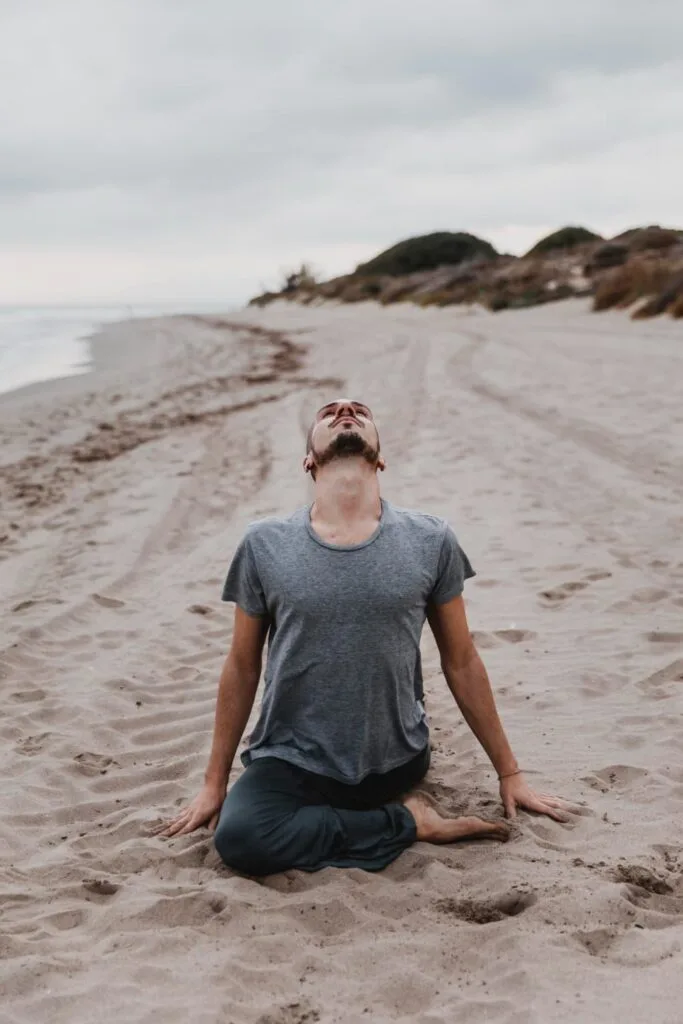
Top 10 Yoga Poses for Men Over 50
Yoga is a versatile practice that can benefit men over 50 by improving flexibility, strength, and balance. Here are ten yoga poses that are particularly effective for older men, with modifications to suit different fitness levels.
Downward Facing Dog (Adho Mukha Svanasana)
Downward Facing Dog is a classic yoga pose that stretches the entire body, particularly the hamstrings, calves, and spine. It’s excellent for improving flexibility and relieving tension in the back and shoulders.
How to Do It:
- Start on your hands and knees, with your wrists directly under your shoulders and knees under your hips.
- Tuck your toes under and lift your hips towards the ceiling, forming an inverted “V” shape.
- Press your hands firmly into the mat, keeping your fingers spread wide.
- Try to straighten your legs and lower your heels toward the floor. It’s okay if they don’t touch—focus on the stretch.
Modifications:
- If you have tight hamstrings, keep a slight bend in your knees.
- Use a chair to support your hands if getting on the floor is difficult.
Seated Forward Bend (Paschimottanasana)
Seated Forward Bend is a gentle way to stretch the hamstrings and lower back. It’s great for improving flexibility in the legs and spine.
How to Do It:
- Sit on the floor with your legs extended straight out in front of you.
- Inhale, lengthen your spine and exhale as you hinge forward at the hips.
- Reach for your toes, ankles, or shins—whatever is comfortable—and relax your upper body.
Modifications:
- Use a yoga strap around your feet to help you reach forward.
- Sit on a folded blanket to raise your hips if your lower back feels tight.
Triangle Pose (Trikonasana)
Triangle Pose stretches the sides of the body, strengthens the legs, and improves balance. It’s a foundational pose in many yoga sequences.
How to Do It:
- Stand with your feet wide apart, about the length of one leg.
- Turn your right foot out 90 degrees and your left foot slightly inward.
- Extend your arms out to the sides at shoulder height, then reach your right hand toward your right foot, hinging at the hip.
- Place your right hand on your shin, ankle, or the floor, and stretch your left arm up toward the ceiling.
Modifications:
- Rest your hand on a block or a chair if reaching the floor is difficult.
- Keep a slight bend in your front knee if your hamstrings are tight.
Warrior II Pose (Virabhadrasana II)
Warrior II is a powerful pose that builds strength in the legs and core while improving balance and focus.
How to Do It:
- Stand with your feet wide apart, turning your right foot out 90 degrees and your left foot in slightly.
- Bend your right knee so it’s directly above your ankle, forming a 90-degree angle.
- Extend your arms out to the sides, gaze over your right hand, and hold the pose.
Modifications:
- If balance is an issue, practice the pose with your back against a wall for support.
- Use a chair under your front thigh to reduce strain on the knee.
Tree Pose (Vrksasana)
Tree Pose is all about balance and concentration. It strengthens the legs and improves overall stability.
How to Do It:
- Stand with your feet hip-width apart.
- Shift your weight onto your left foot, and place your right foot on your inner left thigh, calf, or ankle—avoid the knee.
- Bring your hands together in front of your chest, or raise them overhead if you feel steady.
Modifications:
- Hold onto a wall or chair for support if needed.
- Place your foot lower on your leg if balancing is challenging.
Revolved Triangle Pose (Parivritta Trikonasana)
Revolved Triangle Pose stretches the hamstrings, opens the chest, and strengthens the legs. It also improves balance and coordination.
How to Do It:
- Stand with your feet wide apart, turning your right foot out 90 degrees and your left foot slightly inward.
- Reach your left hand down toward your right foot, twisting your torso to the right.
- Stretch your right arm up toward the ceiling, keeping your gaze on your top hand.
Modifications:
- Rest your hand on a block or chair to support the twist.
- Keep a slight bend in your front knee to reduce tension in the hamstrings.
Intense Side Stretch (Parsvottanasana)
Intense Side Stretch deeply stretches the hamstrings and calves, and it helps improve posture by lengthening the spine.
How to Do It:
- Stand with your feet about three feet apart, turning your right foot out 90 degrees and your left foot slightly inward.
- Square your hips toward your front leg and fold forward over your right leg.
- Reach your hands toward the floor or your shin, keeping your spine long.
Modifications:
- Use blocks under your hands if reaching the floor is difficult.
- Keep a bend in your front knee if you feel tightness in your hamstrings.
Half Moon Pose (Ardha Chandrasana)
Half Moon Pose challenges balance and strengthens the legs and core. It also stretches the sides of the body and improves coordination.
How to Do It:
- Start in a Triangle Pose with your right foot forward.
- Shift your weight onto your right foot and lift your left leg parallel to the floor.
- Reach your right hand toward the floor or a block, and extend your left arm up toward the ceiling.
Modifications:
- Use a block or chair under your hand for support.
- Keep a slight bend in your standing leg to maintain balance.
Hand-to-Big-Toe Pose (Utthita Hasta Padangusthasana)
This pose is great for improving balance and stretching the hamstrings. It also strengthens the legs and core.
How to Do It:
- Stand tall with your feet together.
- Lift your right leg, bending at the knee, and grab your big toe with your right hand.
- Slowly straighten your leg in front of you, keeping your spine long and steady.
Modifications:
- Use a strap around your foot to help extend your leg.
- Keep your knee bent if you can’t straighten your leg fully.
Eagle Pose (Garudasana)
Eagle Pose is excellent for stretching the shoulders, upper back, and legs while also improving balance and focus.
How to Do It:
- Stand with your feet together and bend your knees slightly.
- Wrap your right leg around your left, and hook your right foot behind your left calf.
- Cross your right arm under your left, bringing your palms together if possible.
- Hold the pose, then switch sides.
Modifications:
- Sit in a chair if balancing on one leg is difficult.
- Keep your toes on the floor for extra stability.
These yoga poses for men over 50 are perfect for improving flexibility, strength, and balance. Incorporate them into your routine, and remember to listen to your body, adjusting the poses as needed. In the next part, we’ll discuss how to create a sustainable yoga routine that fits into your daily life.
Creating a Sustainable Yoga Routine
Starting yoga is one thing, but sticking with it is where the real magic happens. To make yoga a lasting part of your life, especially as a man over 50, it’s important to build a routine that’s both enjoyable and realistic.
How Often Should Men Over 50 Practice Yoga?
Consistency is key when it comes to reaping the benefits of yoga. However, that doesn’t mean you need to practice for hours every day. A good starting point is to aim for 2-3 sessions per week, each lasting about 30-45 minutes. This schedule allows your body to gradually adapt to the movements while giving you enough rest between sessions. As you become more comfortable, you might find yourself naturally wanting to practice more often, and that’s great! But remember, it’s not about the quantity of time spent on the mat but the quality of the practice.
Incorporating Yoga into Daily Life
Finding time for yoga can seem challenging, but it’s easier than you might think. The key is to integrate it into your daily routine without feeling overwhelmed.
- Morning Stretches: Start your day with a few simple stretches, like Downward Facing Dog or Seated Forward Bend. These poses can help wake up your body and set a positive tone for the day.
- Evening Wind-Down: In the evening, unwind with relaxing poses such as Tree Pose or Reclined Twist. These poses can help release the tension that builds up during the day, promoting better sleep.
- Break Time Yoga: If you’re short on time, even a 5-10 minute session during your lunch break or after work can make a difference. Simple poses like Triangle Pose or Warrior II can refresh your mind and body.
By weaving yoga into your daily life, you’ll start to notice its benefits more quickly, and it will become a habit rather than a chore.
Listening to Your Body
One of the most important aspects of practicing yoga, particularly for men over 50, is to listen to your body. Yoga is not about pushing yourself to the limit; it’s about finding balance and harmony.
- Respect Your Limits: If a pose doesn’t feel right or causes discomfort, modify it or skip it altogether. Over time, your flexibility and strength will improve, and you’ll be able to do more. There’s no rush—progress at your own pace.
- Rest When Needed: It’s perfectly okay to take a break during your practice. If you’re feeling fatigued or if a particular day has been tough, listen to your body and rest. Yoga is about finding peace and well-being, not adding stress.
- Stay Mindful: Focus on your breath and the sensations in your body during each pose. This mindfulness helps prevent injury and makes your practice more rewarding. It also connects the physical aspect of yoga with the mental, creating a holistic approach to well-being.
By creating a routine that suits your lifestyle and listening to your body’s needs, you can make yoga a sustainable part of your life. The benefits of regular practice will soon become evident, not only in your physical health but also in your mental and emotional well-being. In the next part, we’ll address common challenges that men over 50 might face when starting a yoga practice and how to overcome them.
Addressing Common Challenges
Starting yoga can be a bit daunting, especially if you’re over 50 and dealing with the natural changes that come with aging. But don’t worry—every challenge has a solution, and yoga is a practice that can be tailored to meet your needs.
Overcoming Flexibility Issues
One of the most common concerns for men over 50 is flexibility. It’s easy to feel discouraged when you can’t reach your toes or bend as deeply as you’d like. However, yoga isn’t about how far you can stretch; it’s about gradually improving your range of motion over time.
- Start Small: Begin with poses that gently stretch your muscles, like a Seated Forward Bend or Child’s Pose. These positions are less intense and give your body time to adapt.
- Use Props: Blocks, straps, and bolsters can help you reach poses that might seem out of range. For example, using a strap in a Seated Forward Bend allows you to stretch without straining.
- Be Patient: Flexibility improves with consistent practice. Don’t rush; instead, focus on small, steady progress. Remember, yoga is a journey, not a race.
Dealing with Joint Pain and Injuries
Joint pain, particularly in the knees, hips, and lower back, is another common issue. Yoga can help alleviate this pain, but it’s important to approach your practice with caution.
- Modify Poses: If a pose puts too much strain on your joints, modify it. For example, in Warrior II, you can use a chair to support and reduce pressure on the knees.
- Focus on Alignment: Proper alignment is crucial to preventing injury. Pay attention to how your body feels in each pose, and don’t hesitate to make adjustments. Even small tweaks can make a big difference.
- Incorporate Restorative Poses: Restorative yoga poses, such as Legs-Up-the-Wall or Reclining Bound Angle Pose, are gentle on the joints and promote healing. These poses are great to include at the end of your practice.
Staying Motivated
Staying motivated can be tough, especially when results aren’t immediate. It’s normal to have days when you’d rather skip your practice, but consistency is key to enjoying the full benefits of yoga.
- Set Realistic Goals: Instead of aiming for perfection, set small, achievable goals. For instance, commit to practicing yoga for 10 minutes a day. As you see progress, you’ll naturally want to do more.
- Track Your Progress: Keep a journal of your yoga sessions, noting how you feel after each practice. Seeing your improvements, no matter how small, can boost your motivation.
- Find a Yoga Buddy: Practicing with a friend can make yoga more enjoyable and hold you accountable. Plus, it’s a great way to share tips and experiences.
These challenges are common, but they’re not insurmountable. By taking a mindful, patient approach to your practice, you can overcome these hurdles and make yoga a rewarding part of your life. Next, we’ll tackle some frequently asked questions that men over 50 often have about starting yoga.
FAQs about Yoga for Men Over 50
Is Yoga Safe for Men Over 50?
Yes, yoga is generally safe for men over 50, but it’s important to approach it mindfully. If you have any existing health conditions or concerns, it’s wise to consult with your healthcare provider before starting. Yoga can be adapted to suit different fitness levels and physical limitations, making it a safe and effective way to stay active as you age.
What Type of Yoga Is Best for Older Men?
The best type of yoga for older men is one that aligns with your fitness level and goals. Hatha yoga and restorative yoga are both excellent choices, as they focus on gentle stretching, breath control, and relaxation. These styles are less intense and offer modifications for different abilities, making them ideal for beginners or those with limited flexibility.
How Long Before I See Benefits from Yoga?
The benefits of yoga can be felt almost immediately, especially in terms of relaxation and reduced stress. However, noticeable improvements in flexibility, strength, and balance usually take a few weeks to months of consistent practice. Remember, yoga is a long-term commitment, and the benefits build up over time.
Can Yoga Help with Weight Loss for Men Over 50?
Yoga can support weight loss by increasing physical activity, reducing stress, and promoting mindfulness around eating habits. While yoga alone may not be as calorie-burning as other exercises like running, it helps build muscle, improve metabolism, and reduce cortisol levels, which can contribute to weight loss.
Do I need to be flexible enough to start yoga?
No, you don’t need to be flexible to start yoga. Flexibility is something that develops with practice. The beauty of yoga is that it meets you where you are—whether you’re stiff as a board or already somewhat flexible. Poses can be modified to suit your current range of motion, and over time, your flexibility will naturally improve.
Can Yoga Help with Managing Chronic Conditions?
Yoga is often recommended as a complementary therapy for managing chronic conditions such as arthritis, high blood pressure, and back pain. By reducing stress, improving circulation, and enhancing joint mobility, yoga can play a significant role in managing symptoms and improving overall quality of life. However, it’s important to practice under the guidance of an experienced instructor who can provide modifications and ensure you’re doing poses safely.
How Often Should I Practice Yoga?
For best results, aim to practice yoga 2-3 times per week. This frequency allows you to build strength and flexibility while giving your body time to rest and recover. As you become more comfortable, you can gradually increase the frequency of your sessions, but always listen to your body and don’t overdo it.
Conclusion and Final Tips
Yoga offers countless benefits, especially for men over 50, from improving flexibility and strength to enhancing mental clarity and reducing stress. By starting a yoga practice, you’re not just adding another workout to your routine—you’re embracing a holistic approach to well-being that can positively impact every aspect of your life.
Final Tips for Success
- Start Slow and Build Gradually: Don’t feel pressured to master every pose right away. Begin with simple poses, focus on your breath, and gradually increase the intensity as your body adapts.
- Stay Consistent: The key to reaping the benefits of yoga is consistency. Try to practice regularly, even if it’s just a few minutes each day. Over time, those minutes add up to significant progress.
- Listen to Your Body: Your body is your best guide. If something doesn’t feel right, don’t force it. Modify poses when necessary and take breaks when you need them. Yoga is about working with your body, not against it.
- Seek Guidance When Needed: If you’re new to yoga, consider attending a class or following a guided online session. An experienced instructor can help you with proper alignment and technique, ensuring you get the most out of your practice safely.
- Enjoy the Journey: Yoga is not a destination but a journey. Enjoy the process, celebrate small victories, and be patient with yourself. The more you practice, the more you’ll discover about your body and mind.
Embracing yoga as part of your daily life can bring lasting benefits, helping you stay strong, flexible, and calm well into your later years. So, roll out your mat, take a deep breath, and enjoy the many rewards that yoga has to offer.

